Fascia 101: Does myofascial release work?
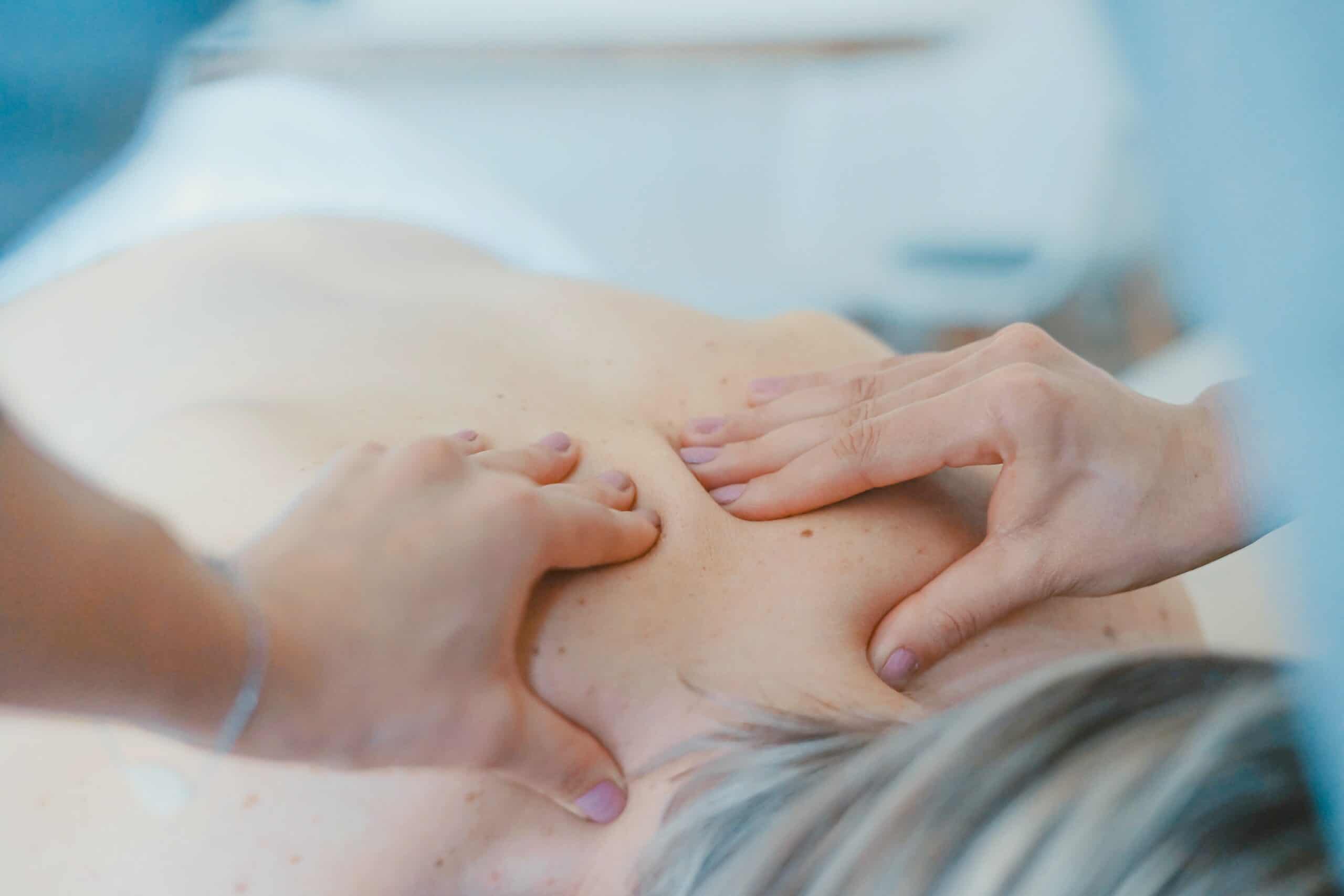
Why all this fuss about fascia? If you are still wondering about why we are harping on and on about it, you really need to read our previous two blogs on what fascia is and how all our movements and functions are deeply affected by it. A lot of times, our aches and pains are not purely muscular. If we don’t make optimum use of the fascia, it can lead to dysfunction in it as well as the surrounding muscles. When such pain occurs, myofascial release therapy is used. In this blog, we will be discussing different myofascial release techniques.
Myofascial Dysfunction
As we know, fascia is a viscoelastic tissue. If the viscosity is reduced it leads to densification. If the fibers lose their tenacity and become an entangled mass it causes fibrosis. Stiffness and pain are common symptoms in both cases. Some people also develop a tingling sensation in their extremities and some get numbness. And if circulation is affected, the palms and feet can easily get clammy and cold.
There can be multiple causes for myofascial dysfunction. One of the most common causes is posture. When we overuse a certain set of tissues due to habitual postures, they can develop tightness. Genetic disorders and direct trauma due to injury are also responsible for myofascial dysfunction.
What is Myofascial Release?
Myofascial Release is a hands-on technique that involves applying gentle, sustained pressure into the myofascial connective tissue to eliminate pain and restore motions. This is based on the principle that a low load applied slowly will allow a viscoelastic medium to elongate.
Myofascial release is not just used for dysfunctions. By putting pressure on certain areas in the body, stimulates the neuroreceptors in the fascia and sends a message for the body to relax. It also helps in improving proprioception (read more about proprioception here). Myofascial release is extremely useful for lymphatic drainage and improving circulation in the body. Additionally, it makes your body more receptive to stretching. It smoothens out tight muscles post a workout and instantly makes you feel better.
Types of Myofascial Release
There are a variety of Myofascial release techniques available, here are some of them:
Trigger point manual therapy:
A Trigger Point is a hyperirritable spot, a palpable nodule in the taut bands of the skeletal muscles’ fascia. Trigger point therapy is a neuromuscular therapy designed to speed up recovery from injury, correct muscular imbalances, and relieve pain. Your physiotherapist will stretch the muscle and then apply pressure to areas of tightness or ‘knots’. This helps to relieve tension and promote healing. Trigger point therapy can be beneficial for conditions including muscle injury, tightness, spasms, and repetitive strain injury
Dry needling:
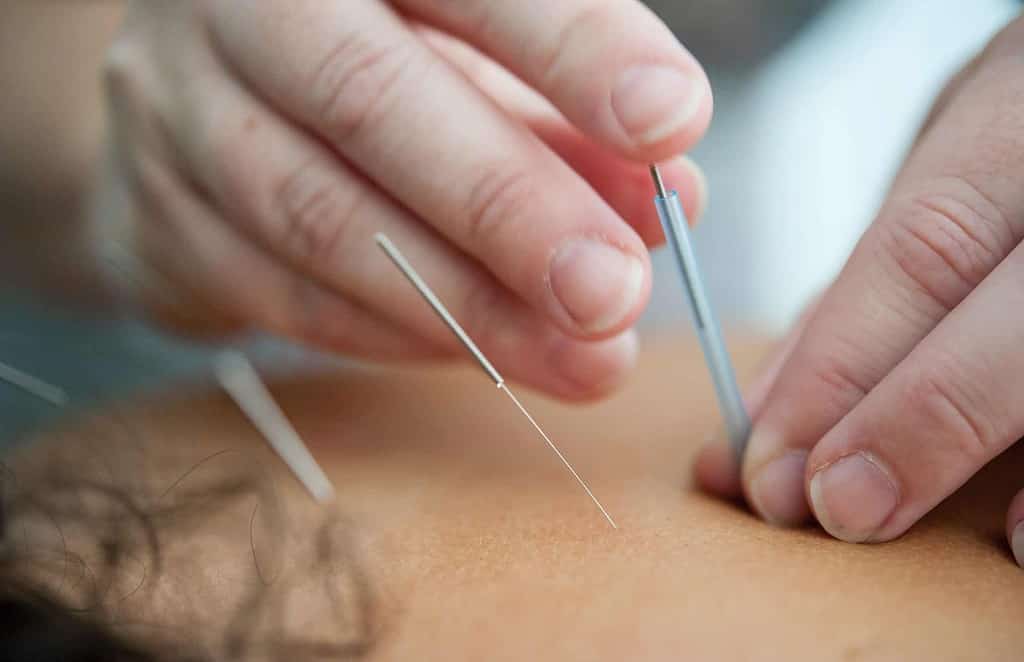
Another trigger point release technique, dry needling is an invasive procedure where a fine filiform stainless-steel needle is inserted into the skin and muscle. It is dry as no medication is injected. This is different from acupuncture which is an ancient Chinese practice used to treat all types of ailments including pain by inserting needles along meridians to allow better flow of the chi or life force in the body. A recent Western practice, dry needling, is specifically for trigger points. Dry needling of these myofascial trigger points via mechanical stimulation causes an analgesic effect and a local twitch response, which is basically a contraction of the muscle fibers. It also may cause a small focal lesion which triggers the repair mechanism to start acting quickly to heal and regenerate the muscle.
Low-grade massage:
This massage, as opposed to deep tissue massage, is a combination of light stretching and massage to release tension and break up scar tissue. The physiotherapist will apply moderate traction and twisting techniques in combination with gentle stretching in order to achieve this. Each stretch and massage technique can last for several minutes and be performed several times until the muscle is completely relaxed. It is beneficial for muscle spasms, carpal tunnel syndrome, whiplash, arthritis, and fibromyalgia among others.
Cupping:
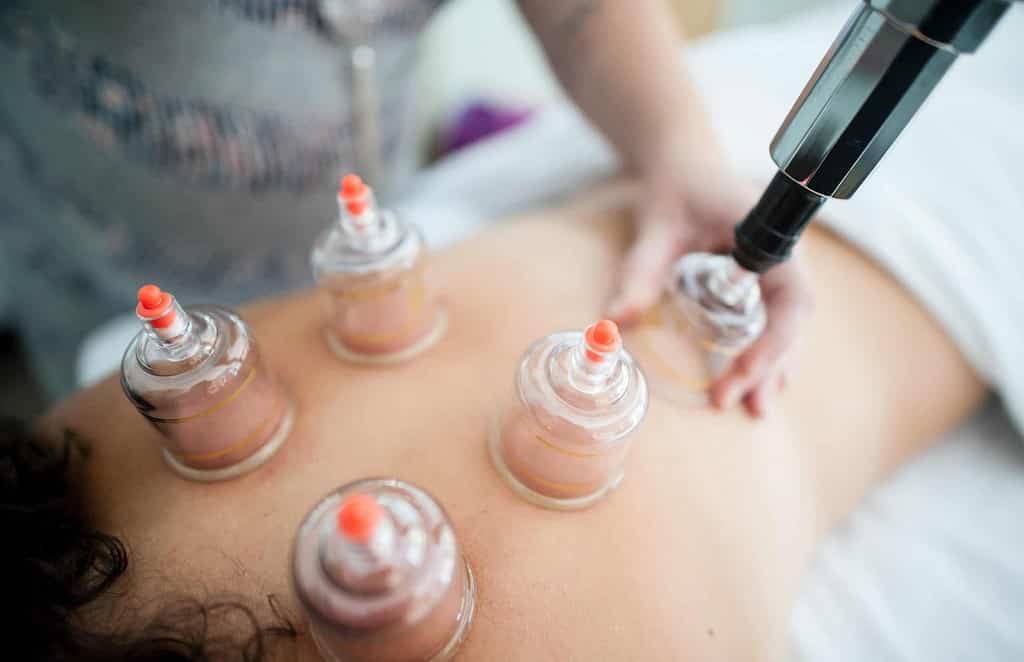
Cupping is a type of alternative therapy that originated in China. It involves placing cups on the skin to create suction. Cupping was originally performed using animal horns. Later, the ‘cups’ were made from bamboo and then ceramic. The suction was primarily created through the use of heat. The cups were originally heated with fire and then applied to the skin. As they cooled, the cups drew the skin inside. Cupping increases blood circulation to the area where the cups are placed. This may relieve muscle tension, which can improve overall blood flow and promote cell repair. It may also help form new connective tissue and create new blood vessels in the tissue. A famous Taoist alchemist and herbalist, Ge Hong, reportedly first practiced cupping in the 3rd century AD. Many Taoists believe that cupping helps balance yin and yang, or the negative and positive, within the body. Restoring balance between these two extremes is thought to help with the body’s resistance to pathogens as well as its ability to increase blood flow and reduce pain. Modern cupping is often performed using glass cups that are rounded like balls and open on one end. It can be useful in treating shingles, facial paralysis, cervical spondylosis, lumbar disc herniation, etc.
Gua sha:
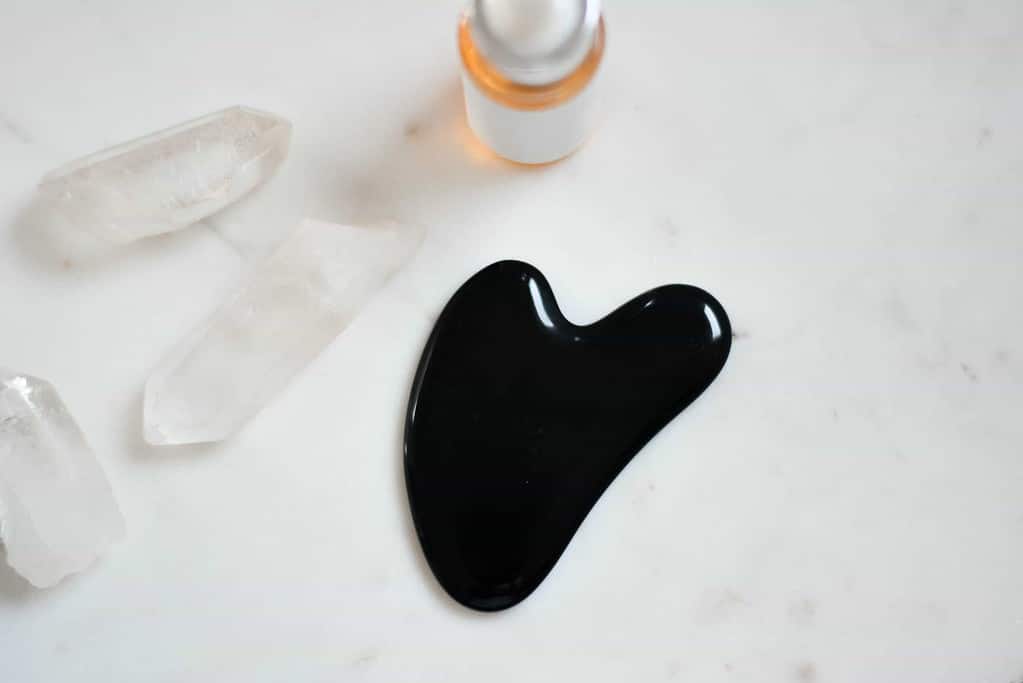
Gua sha is a traditional Chinese healing method in which a trained professional uses a smooth-edged tool to stroke your oiled skin while they press on it. This motion raises small, red, rash-like dots that show under your skin called petechiae. People use gua sha to treat chronic pain all over their body especially on the back, neck, butt, arms, and legs. They often do it alongside other complementary treatments like herbal medicine, massage, acupuncture, and heat therapy. This process is believed to help blood flow and create a lifting effect on your skin, which some say may help lessen toxins in your body and promote healing.
Rolfing:
No, not ROFLing (although, I feel rolling on the floor laughing is a great way to relieve any tension), Rolfing is a form of alternative medicine originally developed by Ida Rolf that aims to align the human body in relation to gravity. Rolf describes the body as organized around an axis perpendicular to the earth, pulled downward by gravity, and she believed the function of the body was optimal when it was aligned with that pull. In her view, gravity tends to shorten fascia, leading to disorder and imbalance, inefficiency in movement, and pain. Thus, Rolfers aim to lengthen the fascia in order to restore the body’s arrangement around the axis and facilitate improved movement. It is typically delivered as a series of ten hands-on physical manipulation sessions sometimes called ‘the recipe’. Practitioners combine superficial and deep manual therapy with movement prompts. The process is sometimes painful
Lymphatic drainage:
Lymphatic drainage is a manual massage technique that works on the lymphatic system, stimulating it to work quickly by moving the lymph to the lymph nodes [throughout your body, but largely located in your neck, armpits, and groin]. Its main function is to accelerate the process of removing the accumulated liquid between the cells and their catabolic residues, directing them to the capillary vessels and, through specific movements, so that they are eliminated.
Foam rolling:
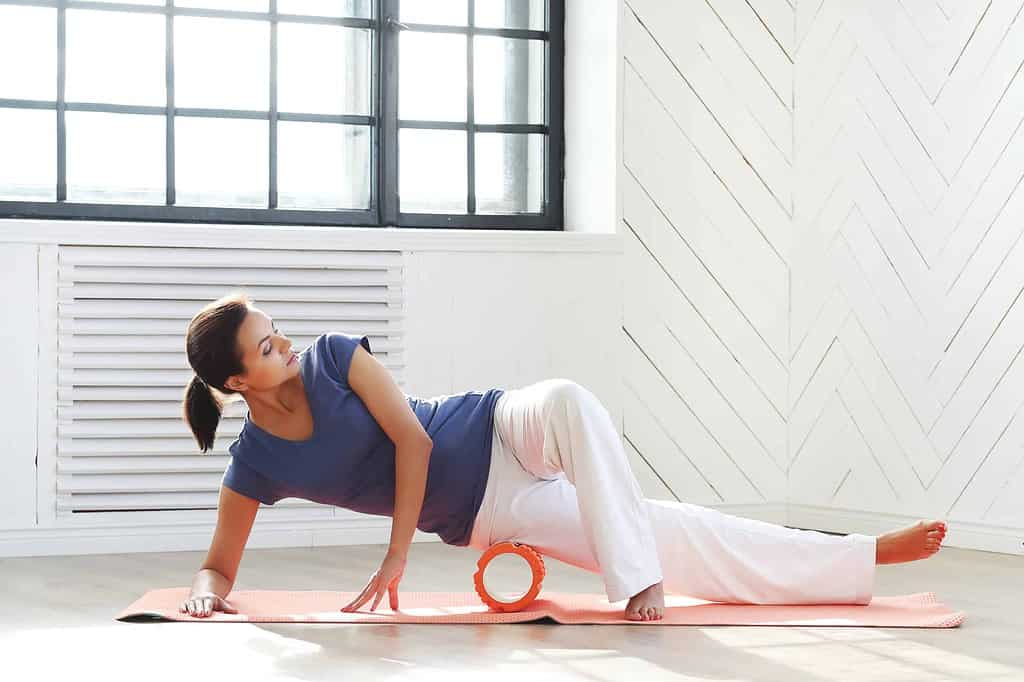
One of our favorite Pilates props can not only be used for exercise but also for myofascial release. Foam rolling is an essential part of training for athletes. With their heavy workouts, their muscles can get overworked. Foam rolling can improve their mobility and prevent injuries due to tightness in muscles. However, foam rolling should be avoided just before an important competition. (We have a special Pilates class for sportspersons, find out more here). The best thing is that myofascial release using a foam roller can be done anytime and anywhere. It is like being your own massage therapist.
Benefits of myofascial release
The aim of all myofascial release therapies is to mobilize the fibrous tissues and unravel the knots. A lot of people turn to collagen supplements to improve fascial and skin health, but there is not enough research to prove its efficacy. These techniques provide relief from pain and make you feel lighter. However, this is temporary relief. To maintain fascial health in the long run, you need to supplement it with the right movement. This is where Pilates comes into the picture.
The variety of movements that we do in our Pilates routine keeps the fascia functioning at its optimum and prevents dysfunction and pain. Experience it for yourself by joining Moushu’s Pilates online classes.
NOTE: We do not promote or claim the efficacy of any of the above-mentioned myofascial techniques. There are lots of contraindications for every technique. Please consult your doctor before going for any of the above-mentioned therapies.
Written by Tarannum Samtani under the guidance of Dr. Persis Elavia

Comments
Thomas Myers was a Rolfer and studied under Ida Rolf herself. He developed a dynamic form of Rolfing and called it Anatomy Trains. It follows muscle and fascial slings and I find it more effective than Rolfing.
Just thought I’d share.
Hi
Thank you for the information.
Yes, The Anatomy Trains are Myofascial links and we use these as we move.
So Rolfing is more release work where as Anatomy Trains are more theoretical concepts to use when we plan movements.